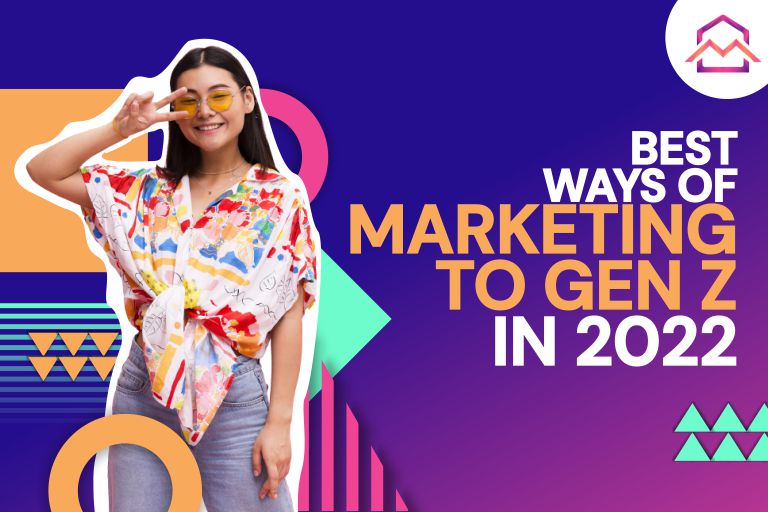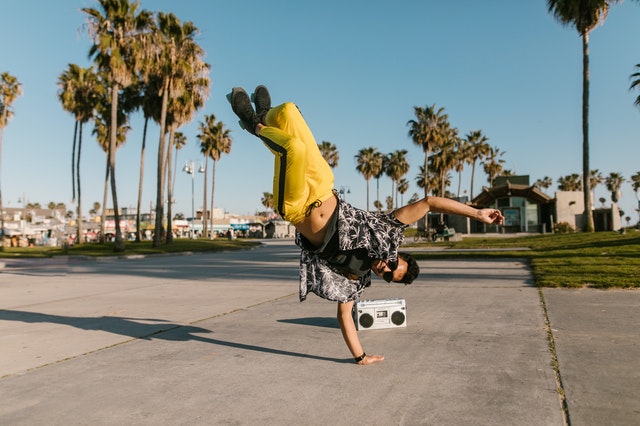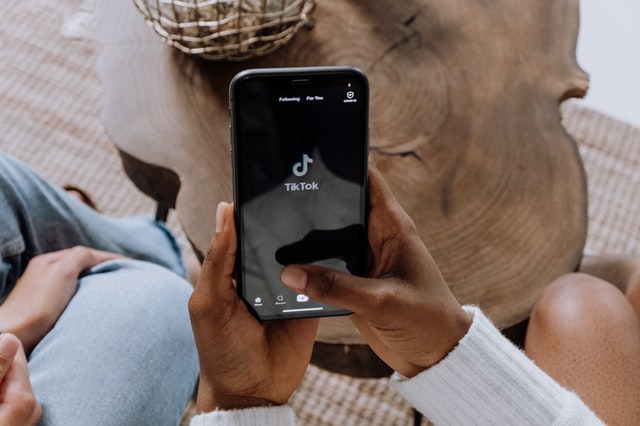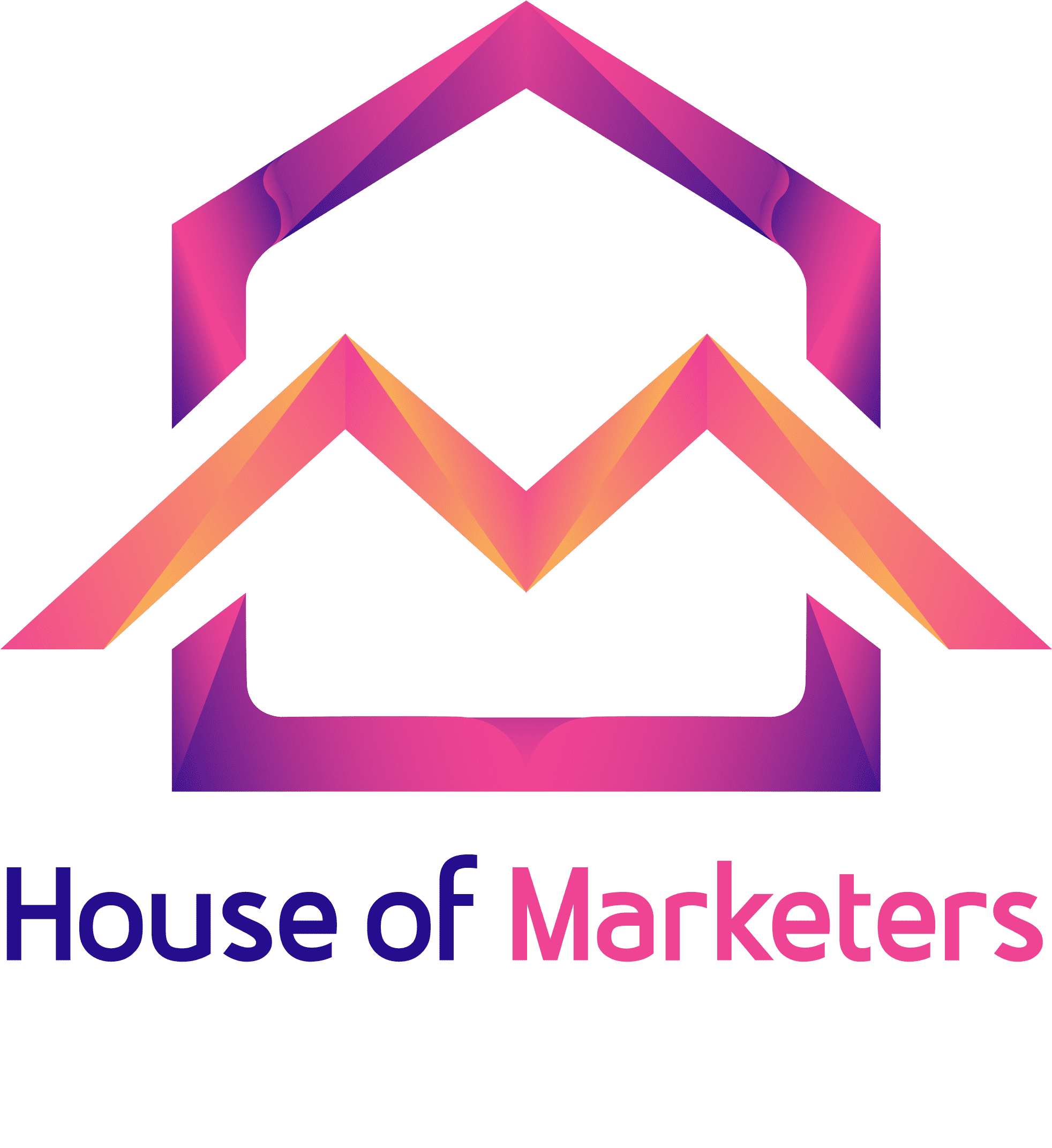A Guide for Marketing to Gen Z (Generation Z)

A comprehensive understanding of the nuances behind marketing to Generation Z is critical for brands that are targeting younger audiences. The traditional marketing playbook can’t be applied the same way with this increasingly literate, digital savvy, and purpose-driven demographic. If your brand is looking to tap into what’s now the largest generation, constituting 32% of the global population, read on for some useful insights that will inform your end-to-end marketing strategy.
But First… Who Classes As Generation Z?
Generation Z, also known as Gen Z, zoomers, centennials, and iGen, refers to the generation that comes after millennials but before Generation Alpha. Researchers generally categorise Generation Z as being born between the mid to late 90s and the early 2010s. The majority of this group are offspring of Generation X.
“Generation Z will soon become the largest consumer group”
Generation Z is the first social generation, which has grown up on the Internet, social media, and widely accessible digital technology. Often referred to as digital natives, their traits, characteristics, and values are different from other generations. Coupled with the fact that Generation Z will soon become the largest consumer group as well, it’s easy to see why marketers are increasingly making it a point of emphasis to create tailored strategies that speak directly to this demographic.

Generation Z Statistics
Comprehensive insight into your target audience is one of the first rules of marketing. While Generation Z consists of earning as well as dependent consumers, both groups still have the tremendous pull that impacts overall consumer trends. Here are some interesting Generation Z statistics that help to define this group for marketing purposes.
- Generation Z spends up to 8 hours per day online (Global Web Index)
- Compares to millennials, Generation Z is 2x more like to shop online using their mobile device (Forbes)
- 33% of Generation Z were persuaded to make a purchase after seeing it on social media (Campaign Monitor)
- Generation Z accounts for 60% of TikTok’s user base (Forbes)
- Over 20% of Generation Z prefer to engage with their favourite brands via social media, which is higher than any alternative channels (Campaign Monitor)
- 85% of Generation Z use social media to learn about new products (Hootsuite)
- Social media influences 54% of Generation Z (Hootsuite)
- 45% of Generation Z follow at least 10 influencers on social media (Forbes)
- Over 36% of Generation have never made a purchase based on an email marketing campaign (Campaign Monitor)
- Generation Z influences $600 billion in family spending (WARC)
- Over 50% of Generation Z have reportedly installed ad-blocking software
- 39% of Generation Z have more loyalty to brands that match their style (CGK)
Authenticity & Transparency Is Key When Marketing To Gen Z
Generation Z is more naturally drawn towards businesses with solidified values in their process of marketing and driving revenue. Businesses and marketers must not only showcase these values clearly but even more importantly should genuinely mean it.
Globalisation and technology mean that young people are more aware of what’s taking place behind the scenes than ever before. Add this to Generation Z’s demand for authentic brands that are ethical and transparent about their operations, then it quickly becomes evident why it’s critical to navigate the terrain carefully.
A Brand That’s Doing It Right
Back in 2014, women’s clothing brand Aerie made a commitment to stop retouching their photos. This was fairly unprecedented in the fashion industry as a whole at the time, let alone in the swimwear, underwear, and activewear niche. In a market that’s well known for excessive photoshopping and promoting unrealistic body standards, this was a bold strategy. By going against the status quo and sending a loud and clear message that real authenticity is absolutely beautiful, Aerie not only won the hearts and minds of the public but this also translated to brand growth.

The move also led the wider industry to re-evaluate its values and ethical understandings. While there is still a long way to go in fashion, big brands like Missguided have since followed Aerie’s lead to stop heavily editing their model images. This type of approach really resonates with Generation Z and is reflective in these types of brands’ standing among today’s younger demographic.
How Things Can Go Wrong
A brand’s image and reputation could just as easily go the other way though. Victoria’s Secret is a perfect example of this. After a turbulent few years filled with bad publicity for being out of touch with the modern climate of women’s empowerment and equal rights, the famous lingerie line saw a huge drop in sales. As a result of the backlash, the company has recently undergone a complete rebrand, pledging to become a leading women’s advocate. While it’s better late than never, there is serious skepticism as to whether this is an authentic move or one that’s solely been made to prevent the brand from completely falling apart.
As a more inquisitive demographic, Generation Z won’t believe something simply because a company says so. There needs to be a trust element to help sway purchasing decisions in your favor. If there’s any sense of inauthenticity, insincerity, or an overt lack of transparency about a company’s business practices, Generation Z will not hesitate to boycott a brand as has been with increasing frequency in recent years.
Authenticity and transparency don’t stop at shopping habits either. It extends further afield. According to Forbes, 77% of Generation Z consider company diversity as a deciding factor when seeking employment. Not only is this demographic looking for these values in their own workplace, but they also want to know that their favourite brands have similar principles for their staff and other stakeholders.
It’s on marketers to ensure that all these elements come across consistently in various touch-points. Reporting on these aspects quarterly or annually is no longer sufficient. In that respect, transparency, and authenticity every step of the way should be the new norm. It will help to enhance your image in Generation Z’s eyes.
Follow Good Causes & Social Movements When Marketing To Gen Z
Generation Z is more cause-driven than other generations, so it helps to bring this out in marketing campaigns. In fact, companies displaying a greater purpose typically outperform the market by 5 – 7% annually. Here is some eye-opening insights from Deloitte’s Global 2021 Millennial & Gen Z Survey to drive this point home:
- 52% of Gen Z donated to charities.
- 40% of Gen Z have been a volunteer or member of a community organisation, charity, or non-profit.
- 40% of Gen Z have created social media content relating to an environmental, human right, political, or social cause.
- 33% of Gen Z have participated in a public demonstration/ protest/ march.
“A combination of technology and widely accessible information gives Generation Z a voice and platform — and brands would be smart to listen.”
Remember that this group is growing up in a time when the power of technology enables them to have access to information with just a few taps of a finger. They’re free to interact with people from all corners of the globe should they wish to. This would have been inconceivable a mere few decades ago. A combination of this technology and widely accessible information gives Generation Z a voice and platform — and brands would be smart to listen.

If you pay close enough attention, you’ll gain valuable insights into the causes and social movements that matter most to this younger audience. Follow it up by incorporating these elements into your business and marketing strategy, and you may just be on to a winner!
A Brand That’s Doing It Right
The online music platform Bandcamp is a great example of this. Bandcamp enables musicians to upload and sell the material directly to fans. This can help them avoid often exorbitant fees from labels and also give them an alternative option to the minimal percentage of streaming royalties they receive from some other platforms.
During the height of COVID-19 in 2020 when the world came to a standstill, independent musicians were severely impacted. To show their support, Bandcamp started a campaign that would help these artists in a small way during this extremely challenging time.
The company picked a day where they would waive their share of sales on the platform so that artists could receive more. On that day alone, fans spent $4.3 million on Bandcamp’s site. On a day where the website typically sells 47,000 items, nearly 800,000 items flew off the proverbial shelves. That’s approximately 15 times more sales than an average day as a direct result of the campaign.
This type of approach has both a short and long-term impact. As you can see, the commitment to a good cause can drive immediate sales (even though Basecamp wasn’t the direct benefactor in this case). But in addition to this, it also strengthens the relationship with its users, which will deliver long-term benefits.
On a grander scale, Generation Z has a strong desire to be a part of something that’s better for society and the planet as a whole. This means brands that focus on sustainability, diversity, and ethics are more likely to get their attention. Authentically implement these components into your core strategy to boost marketing performance.
TikTok Is Essential When Targeting Gen Z
TikTok has seen incredible growth in recent years. Even COVID-19 couldn’t slow the platform down. In fact, it probably fuelled its further growth. Over a 90-day period in the middle of the pandemic, TikTok surpassed Facebook, Instagram, Snapchat, and Twitter with the highest surge in search volume on Google. This begs the question, “Why is TikTok so popular, especially among younger audiences like Gen Z?”

It starts with the nature of the platform itself. TikTok enables regular users to become creators by sharing short videos of almost anything — be it lip-syncing, skits, dancing, sports, pranks, educational snippets, or any other type of content. With the digital nativism that Generation Z brings to the table coupled with social and cultural awareness and a natural tendency to be very expressive, it’s no surprise that 60% of the TikTok audience consists of Generation Z.
“Generation Z is just a lot more conscious of advertising tactics and has a greater appreciation for original, creative, authentic material.”
The rich selection of diverse content on TikTok in conjunction with an algorithm that serves up personalised choices firstly attracts and then keeps Gen Z coming back for more. While general public sentiment says that this demographic isn’t receptive to marketing — and this definitely has some merit — a deeper understanding of this group draws a different conclusion. Generation Z is just a lot more conscious of advertising tactics and has a greater appreciation for original, creative, authentic material.
The most successful brands understand this aspect of marketing to Generation Z and so does TikTok as a platform. The ads often come across as organic content. This is thanks to TikTok’s advanced yet user-friendly interface, which makes it a breeze for individual users as well as businesses to create lively, highly engaging content that looks natural. It’s a stark contrast to a platform like Instagram’s far more “polished”, pixel-perfect-looking feeds. As a result of this, TikTok sees higher levels of engagement and relevance than other platforms.
A Brand That’s Doing It Right
Nando’s is an example of a brand that’s killing it on the platform. With its signature cheeky humour, Nando’s leverages TikTok to bring attention to its menu while also poking fun at themselves, fans, and others in a friendly manner.
In terms of content creation, the brand keeps things fairly simple. Some of the top videos on the Nando’s page use TikTok’s duet feature, which enables interactions with fan content directly. Through this feature, Nando’s can post reactionary content or change the context of the initial fan video to produce even better material. For example, any fan of Nando’s understands the refillable drink quandary. Some people request a glass for water but then use it to fill up on their soft drink of choice instead. So when a customer posted a funny video highlighting this, Nando’s responded in the best possible way. Check it out below:
@nandosuk##duet with @jamieraine_ You know we know, right? 👀 ##nandos ##thatsnotwater♬ Three Little Birds – Kyle
It’s a great example of a company leveraging user generated content (UGC) to strengthen relationships with their audience and enhance their brand image. This type of creativity resonates with Generation Z. It’s also very easy to produce on TikTok, which is what separates the platform from others.
Authenticity, Social Awareness & Creative Campaigns Drive Marketing ROI
Successfully marketing to Gen Z requires a good understanding of this digital native group’s traits, characteristics, and values. On top of quality products or services, authenticity, transparency, and sincere support for good causes and social movements are key to building trust. Complement this by leveraging a cutting-edge platform like TikTok to generate creative content that engages your target audience and you’ll be well on your way to enhancing your brand image and driving growth.

House of Marketers (HOM) is a leading TikTok Marketing Agency. Our global agency was built by early TikTok Employees & TikTok Partners, which gives us the insider knowledge to help leading brands, like Redbull, Playtika, Badoo, and HelloFresh win on TikTok. Want us to convert more of Gen Z and Millennials with TikTok? Get in touch with our friendly team, here.